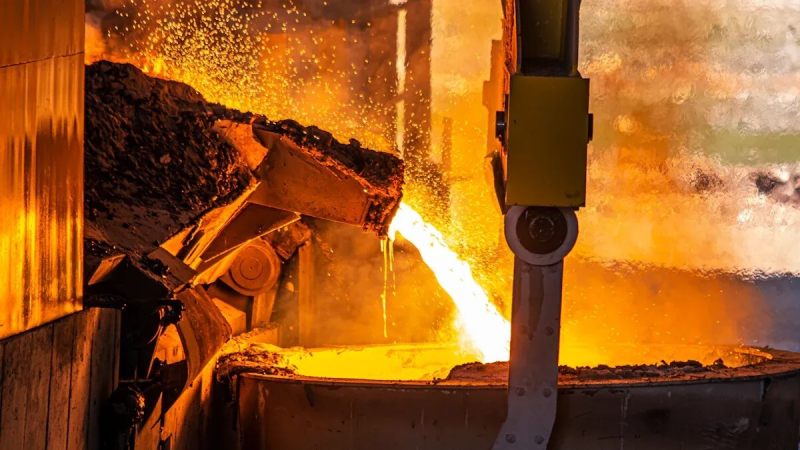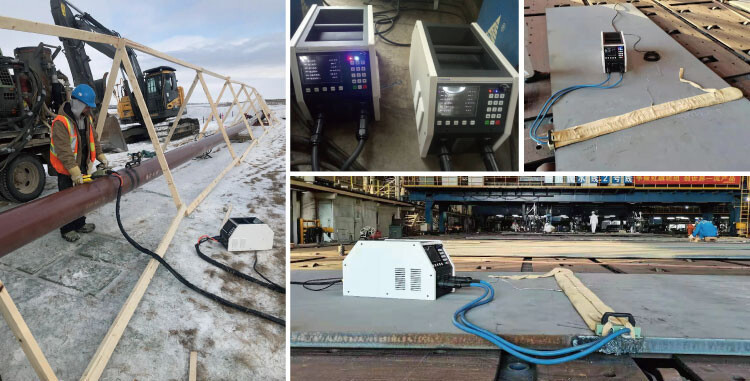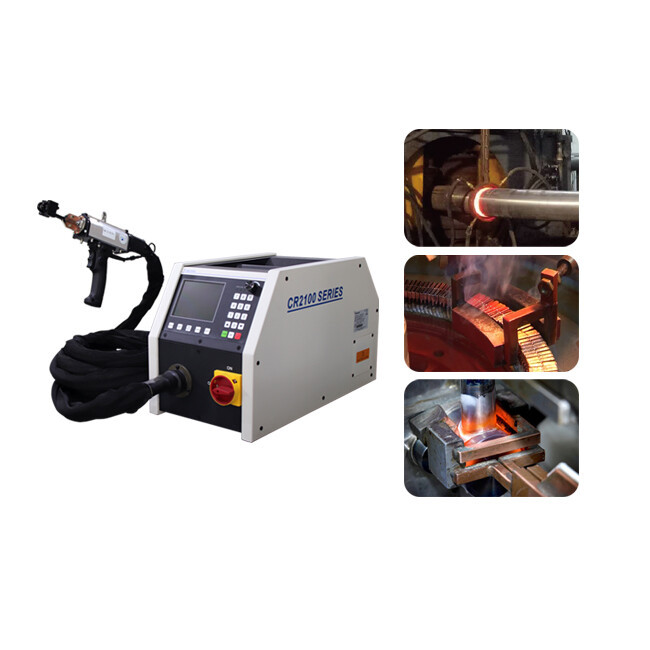

When you pick an induction heater, you need the right one for your job. You should think about what you will use it for. Look at the material and size of your workpiece. Think about how much heat you need. Check the technical details too. Many people make mistakes with coil design. Some pick the wrong frequency. This can cause uneven heating. It can even damage parts. You also need a steady power supply. Check if the material changes, like thickness or coatings. Think about your workspace and safety. Decide if you want extra features like automation. Using a cooktop is not the same as industrial heating. Every project is different. If you are not sure, you can ask Canroon for help.
Key Takeaways
Pick the right frequency and power for your workpiece size and material. This helps make sure heating is even and works well.
Use a coil that matches your part’s shape and size. This stops hot spots and helps save energy.
Plan your workspace with care. Think about space, power, and cooling needs. This keeps your system safe and working well.
Find safety features like automatic shutoff and temperature protection. These keep you and your equipment safe.
Choose trusted manufacturers like Canroon. They give expert advice, custom options, and good support for long-lasting use.
Application Needs

Material & Size
When you choose an induction heater, you need to look at what you want to heat. The type of material and its size matter a lot. Some metals, like steel, heat up fast with induction heating. Others, like copper or aluminum, take more time because they do not resist electricity as much. The shape of your pan or part also changes how well it heats. A thick, round pan needs different settings than a thin, flat one.
Here is a quick guide to help you match the right frequency to your workpiece:
If you use a large, solid pan, you want a lower frequency for deep heating. Small pans or thin parts need higher frequencies for surface heating. The distance between the coil and your pan also affects how well the heat transfers. If your pan sits too far from the coil, it will not heat as quickly or evenly.
You can see how the frequency changes with the size of your pan in this chart:

Tip: Always check if your pan is magnetic. Magnetic pans heat up better with induction heating. Non-magnetic pans may not work at all.
Heating Depth
Heating depth means how far the heat goes into your pan or part. Most of the time, induction heating warms up the surface first. If you need the whole pan hot, not just the outside, you must pick the right frequency. High frequencies heat only the surface. Low frequencies go deeper.
Here is a table that shows how frequency changes the heating depth:
If you use a thick pan, you want a lower frequency so the heat reaches the center. For thin pans, a higher frequency works well because you only need to heat the surface. Over 80% of the heat from induction heating stays near the surface. That is why you need to think about how deep you want the heat to go.
More power is needed for bigger pans or higher temperatures
Process Goals
Before you pick your induction heater, you should know what you want to achieve. Do you want to heat your pan quickly? Do you need to keep the temperature steady? Maybe you want to heat many pans in a short time. These goals help you choose the right settings and features.
Here are some things to think about:
How much power do you need? This is your application power. Bigger pans or higher temperatures need more power.
How fast do you want to heat your pan? Faster heating may need more power or a special coil.
Do you need to control the temperature closely? Some jobs need very steady heat.
Will you heat one pan at a time or many pans in a row? High production means you may want automation.
Do you need safety features? For example, emergency stops or temperature alarms.
Induction heating works in many industries. You can use it for:
Forging and forming
Brazing and soldering
Melting metals
Shrink fitting
Bonding
Wire heating
Surface treatment
Induction heating gives you speed, safety, and control. You can heat your pan fast and only where you want. This saves energy and keeps your workspace safe.
Note: If you plan to heat many pans every day, look for an induction heater with automation. This will help you keep up with high production and make your work easier.
Induction Heating System Specs

Frequency & Power
When you pick an induction heater, you must match the frequency and power to your job. The right settings help you heat parts fast and evenly. If you choose the wrong frequency, you might only heat the outside or miss the middle of your workpiece. Power decides how quickly and how much you can heat.
Here is a table that shows the usual frequency and power ranges for different induction heating systems:
Use higher frequencies for thin parts or when you only need to heat the surface. Lower frequencies are better for thick parts because they send heat deeper. If you need to heat a big block of metal, pick a lower frequency and more power. For small or thin pieces, a higher frequency and less power will work.
Tip: Always check your material and the size of your workpiece before you set the frequency and power. This helps you avoid slow or uneven heating.
Heating works best and is more even if you pick the right frequency. Higher power lets you heat faster or reach higher temperatures. If you need to heat many parts quickly, you will want an induction heating power supply that can keep up.
Coil Design
The coil is the most important part of your induction heating system. It makes the magnetic field that heats your part. The shape, size, and material of the coil all matter. If you use the wrong coil, you might get hot spots or waste energy.
Most coils are made from copper. Copper is good because it carries electricity well and does not waste much energy as heat. Sometimes, people use aluminum coils. Aluminum is lighter and cheaper, but it does not carry electricity as well as copper. This means you might lose some heating power if you use aluminum.
Here are some things to remember about coil design:
Copper coils give you the best heating efficiency and power transfer.
Aluminum coils are lighter and cost less, but they do not heat as well.
The coil shape should match your part. A round coil works for round parts. A flat coil works for flat parts.
The distance between the coil and your part changes how well the heat transfers.
If you use a special copper alloy or silver-plated copper, you can get more strength or better surface conductivity, but it may cost more.
Note: Always match your coil design to your frequency and power settings. This helps you avoid defects and get even heating.
Control Interface
A good control interface makes your induction heater easy to use. You want simple controls that let you set and watch your heating process without confusion. Modern induction heating systems come with many helpful features.
Here is a table that shows some important features and their benefits:
A simple interface saves you time and helps you avoid mistakes. You can set up your induction heating power supply with just a few taps. You can also watch the temperature, power, and other settings in real time. If something goes wrong, the system tells you right away.
Modern control panels help you get the same results every time. You can save your favorite settings and use them again. This means you get the same results every time. You also stay safer because the system can shut down if it finds a problem.
Remember: A good control interface is not just about looks. It helps you work faster, safer, and with better results.
Facility & Installation
Space & Layout
You need your induction heater to fit your workspace. First, think about the size and type you want. Stationary induction heaters are bigger and stay in one place. Portable ones are smaller and easy to move. Here’s a table to help you compare:
If you choose a stationary system, make sure you have enough room. You need space for the heater, coil, and cooling equipment. Portable units are good if you do not have much space. They are also good if you need to move the heater.
Tip: Measure your workspace before you buy. Make sure there is enough space for safe use and repairs.
Power Supply
Your induction heating power supply needs the right setup. Most industrial systems use a 3-phase utility input (50 or 60 Hz). The size of your parts and how fast you want to heat them decide the power you need. Bigger parts or higher heat need more power. If your power supply is too small, the heater will not work well. If it is too big, you waste energy.
Match the power supply to your job for best results.
Bigger jobs need more power and sometimes lower frequencies.
Smaller or faster jobs use higher frequencies.
Good power keeps your system running well.
Manufacturers can help you pick the right induction power supply. They look at your part size, heating speed, and temperature goals.
Note: Always check your building’s electrical capacity before you install a new heater. This helps you avoid overloads and keeps your system safe.
Cooling & Environment
Induction heaters get hot, so you need a good cooling system. Small or portable units use air cooling. Big systems often use water or special fluids. Here’s a table with common cooling methods:
Chiller systems are best for big heaters or hot places. They keep your induction heater cool and working longer. Stainless steel tanks and special fluids help stop rust and clogs.
Your workspace matters too. High humidity can hurt insulation. Dust can build up and cause overheating. Very hot or cold air can damage your equipment. Keep your area clean. Check fans and make sure air can move around your heater.
Alert: Clean your heater often and make sure air can flow. This helps your induction heater last longer and work better.
Advanced Features & Safety
Automation
Modern induction heating systems help make work easier and safer. Automation lets you control each step of the process. Sensors and controllers watch the temperature and power. They change settings so your pan heats the same way every time. You do not need to guess or check often. Automation gives you the same results with every batch.
Some systems use robotic arms to move pans. These robots work fast and never get tired. They help you avoid burns and keep your hands safe. Some induction cooktops have pan-size sensors. These sensors check if your pan fits and only heat when it is in place. This saves energy and keeps you safe.
Automation means fewer mistakes and more repeatable results. You spend less time watching and more time on other things.
Safety Features
Safety is important when using induction heating. Many induction ranges have built-in safety features. Automatic shutoff turns off the cooktop if you forget the pan. Over-temperature sensors stop the system from getting too hot. Some systems check for electrical faults and shut down if there is a problem.
Here is a table of important safety features you should look for:
You should wear safety gear and keep your workspace clean. Regular checks and good training help stop accidents. Built-in safety features act fast, so you can cook without flames and worry less.
Efficiency
Induction heating is known for saving energy. It heats your pan directly, so little energy is lost. Most modern systems reach 70-90% efficiency, much better than old heaters. You save money and keep your kitchen cooler because the cooktop does not waste heat.
You can control where the heat goes. The cooktop only heats the pan, not the air or counter. This means you use less power and do not heat things you do not want to. Advanced controls let you set the exact temperature and time, so you never use more energy than needed.
With induction heating, you get fast, even heat and lower bills. You also help the environment by using less energy.
Manufacturer Support
Canroon Expertise
When you pick an induction heater, you want a company you can trust. Canroon is known for making safe and reliable equipment. Their machines work well and last a long time. Canroon adds safety features like overheat protection and emergency stop buttons. These features help keep you and your team safe every day. You also get smart controls that are easy to use. These controls help you set up your heater and get good results. If you are not sure what you need, Canroon experts can help you choose. They look at your job and help you plan for the future. You do not have to guess. You get a system that fits your work.
Tip: Always check if your manufacturer gives expert advice and simple controls. This can save you time and trouble later.
Customization
Every job is different. Sometimes you need a special coil or a unique setup. Canroon lets you customize your heater to fit your needs. You can ask for special features, different sizes, or new control options. This means your induction heater will fit your workspace and process.
Here are some ways Canroon can change your system:
Custom coil designs for special shapes or sizes
Advanced automation for faster work
Easy-to-use interfaces for simple operation
Upgrades for future needs
You do not have to use a heater that does not fit. Canroon listens to you and builds a system just for your job.
Service & Maintenance
Good support does not end after you buy your heater. Canroon gives you strong service after the sale. You get help with setup and installation. If something breaks, you can call for quick repairs. Canroon offers regular check-ups to keep your heater working well.
You also get:
Training for your team to keep everyone safe
Spare parts and coil replacements when needed
On-site and remote technical support
Maintenance for water cooling and power cables
A good maintenance plan helps you avoid problems. You keep your equipment working longer and safer. Canroon’s team helps you fix issues fast and teaches you how to stop them from happening again.
Choosing the right induction heater means you get the best results for your cooktop and your work. You want to match the heater’s features to your needs. Here’s how you can do it:
Pick the right frequency and power for your cooktop size.
Check your workspace and cooling needs.
Make sure your cooktop heats safely and efficiently.
If you feel unsure, reach out to Canroon or talk to an expert. You’ll get advice that fits your cooktop and your goals. Ready to find the perfect solution? Ask for a personalized recommendation today!
FAQ
What materials work best with induction heaters?
Magnetic metals like steel and cast iron work best. Stainless steel is good if it is magnetic. Aluminum and copper do not heat well. You need special equipment for those metals.
How do I know what frequency I need?
Look at the size of your workpiece. Thick parts need low frequency. Thin or surface heating needs high frequency. If you are not sure, ask an expert for help.
Can I use an induction heater in a small workspace?
Yes! Many induction heaters are small and easy to move. Portable models fit on small tables. Make sure you have enough room for safe use and cooling.
What safety features should I look for?
Check for these features:
Automatic shutoff
Over-temperature protection
Emergency stop button
These features help keep you and your equipment safe.
Previous:
Next:
Sign up for updates
